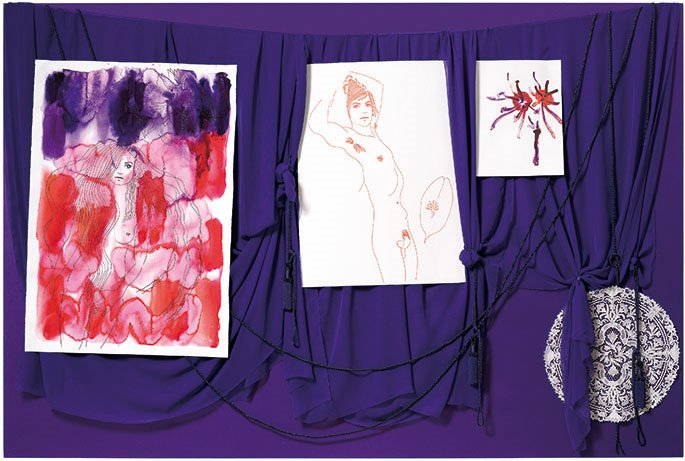How come that modern forms seem to be so appealing in the field of contemporary art? What is it precisely about modernist art that makes one think that there is after all
something related to the modernist enterprise that presents itself as relevant and interesting in the present day situation?
In the catalogue published on the occasion of the exhibition modern modern that was recently held at the Chelsea Art Museum, April 17 - June 13, 2009, and which was curated by Pati Hertling, Jan Verwoert argues that it is the crooked, the contradictory and the unresolved implied in many modernist works and practices, and not the straight laid bare in the disastrous modernist masterplans for an all-embracing revolution in the world, that gain distinction as being valuable if one takes a closer look at the modern project today. In the same catalogue Pati Hertling points to the idea that what she calls the modern modern has a sadness attached to itself and deals with longing and missing. Hertling also reminds us that objects are simply beautiful.
Now, these analysises of what we can call the contemporary modern are surely going straight to the point. There is an undeniable attractiveness to the revolutionary commitment to endless experimentation and innovation in artistic form inherent to the twentieth-century avant-garde modernism. The intense innovative spirit of many early modernist artworks are nearly mad or at least a little bit over the top if one takes an ordinary conformist point of view. That madness is precisely encapsulated by Verwoert in his theorizing about the crooked modern. At the same time there is, as Marjorie Perloff has stressed, a dominance of the lyric with its associated effects of singularity in some modernist art, say modernist poetry for instance, which fits very well with Hertlings nodding in the direction of an emotionalism attached to the contemporary modern. To the extent that the postmodern can be analysed, at least in part, as a refusal of the aesthetic Hertlings accentuation of the concept of beauty again touches upon a feature that surely makes the current focus upon modernism quite understandable and transparent. Because the aesthetic never really left the field of contemporary art and beauty matters. If something is beautiful it is simply worth seeing. And if something is beautiful in "the over the top way" or in the mad or the crooked way it is really worth seeing.
Allow me to emphasize some examples from the modernist reservoir. The beauty of diversity, say the blending and/or unification of different media found in modernist works of art like the cubist collage is an example from the twentieth-century avant-garde modernism that presents itself as interesting today in relation to a contemporary modern approach. The radical innovatory spirit in the works of the female russian constructivists like for instance Varvara Stepanova, Alexandra Exter and Lioubov Popova can very well also be seen as an example of an experimental strategy that went far "over the top" in the very positive sense of the phrase and which is highly interesting today. These female artists, sometimes described as the amazones of the early twentieth-century avant-garde, did not refrain from either a sensuous color spectrum rooted in the russian folklore or the combining of a soft and feminine material like chiffon with a hard-line geometrical constructivist sculptural structure. In other words, they did not refrain from going far and sometimes then went really "over the top." Their works might again serve as interesting points of reference for a contemporary modernist approach.
Furthermore, if we pause for a look at the post-war western art allow me then to emphasize the lyric spirit of the works of the american female artist Joan Mitchell. No doubt that Jackson Pollock was the favorite artist of the modernist art critic Clement Greenberg compared to for instance artists like Lee Krasner or Joan Mitchell. In these matters Greenberg suffered from a masculinist bias. Nevertheless, the intense lyricism in Mitchells paintings and the marked "deep" aesthetic of a unique personal style that her works so paradigmatically exemplify make her an emblematic artist of the post-war american modernism associated with abstract expressionism. Also Mitchells paintings offer themselves as interesting points of reference for a contemporary modern orientation.
So, let´s go for some more modern talk!


